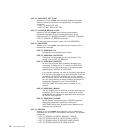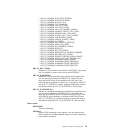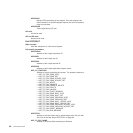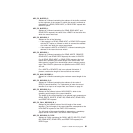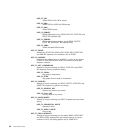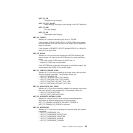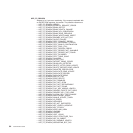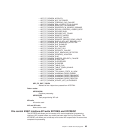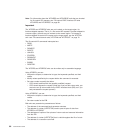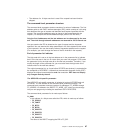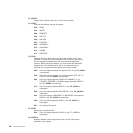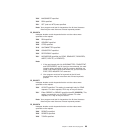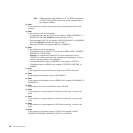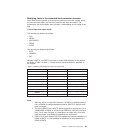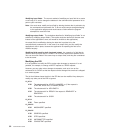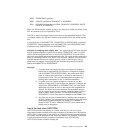Note: For information about the XFCAREQ and XFCAREQC exits that are invoked
for file control SPI requests, see “File control EXEC interface SPI exits
XFCAREQ and XFCAREQC” on page 98.
Important
The XFCREQ and XFCREQC exits are not invoked, on the target region, for
function-shipped requests. That is, if a file control API request is function-shipped to
a remote region, the exits are not invoked on the remote region. To intercept a
function-shipped file control API request on the target region, use the XFCFRIN
exit—see “File control domain exits, XFCFRIN and XFCFROUT” on page 72.
The file control API commands intercepted are:
v READ
v WRITE
v REWRITE
v DELETE
v UNLOCK
v STARTBR
v READNEXT
v READPREV
v ENDBR
v RESETBR.
The XFCREQ and XFCREQC exits can be written only in assembler language.
Using XFCREQ, you can:
v Analyze the request, to determine its type, the keywords specified, and their
values.
v Modify values specified by the request before the command is executed.
v Set return codes to specify that either:
– CICS should continue with the (possibly modified) request.
– CICS should bypass the request. (Note that if you set this return code, you
must also set up return codes for the EXEC interface block (EIB), as if you
had processed the request yourself.)
Using XFCREQC, you can:
v Analyze the request, to determine its type, the keywords specified, and their
values.
v Set return codes for the EIB.
Both exits are passed nine parameters as follows:
v The address of the command-level parameter structure
v The address of a token (UEPFCTOK) used to pass 4 bytes of data from
XFCREQ to XFCREQC
v The addresses of copies of four pieces of return code and resource information
from the EIB
v The address of a token (UEPTSTOK) that is valid throughout the life of a task
v The address of a recursion count field
86 Customization Guide



